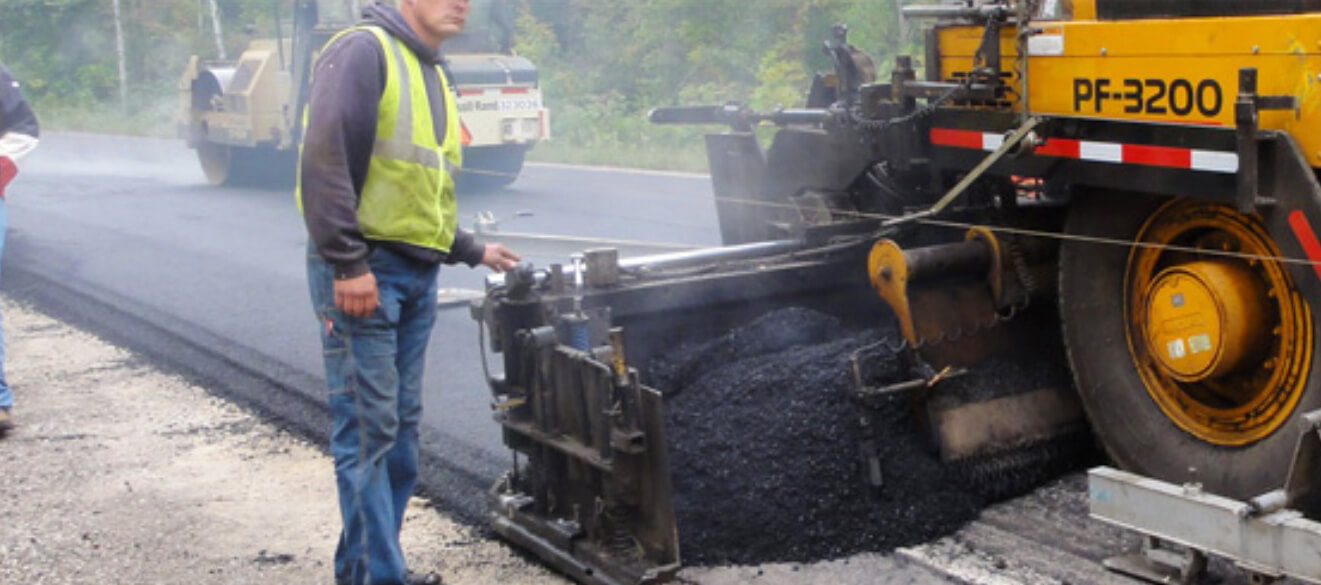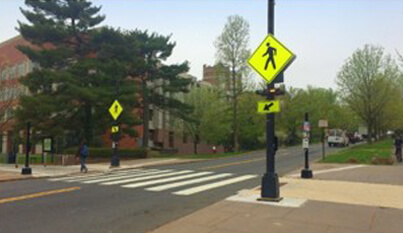NJLTAP Enews Volume 20 – Issue 5 – September/October 2018
According to national traffic data from the U.S. Department of Transportation, severe and fatal crashes are on the rise across the country, increasing 5.6 percent from 2015 to 2016.
Two crash types in particular pose a significant challenge – those resulting from roadway lane departures and pedestrian-involved incidents. In fact, these two crash types combined account for more than 65 percent of roadway fatalities nationwide.
To help reduce these crashes, the fifth round of the FHWA Every Day Counts (EDC-5) program includes innovations dedicated to helping State and local agencies address these crash types.
The Reducing Rural Roadway Departures innovation is new for EDC-5 and the Safe Transportation for Every Pedestrian (STEP) effort was so successful in EDC-4 that it was selected to continue in round 5. The deployment teams that support these innovations will spend the next 2 years promoting proven safety countermeasures and best practices to help reduce these crash types through technical assistance, outreach, training, and more.
Reducing rural roadway departures
In 2016, 18,590 lives were lost on rural roads—more than half of all traffic deaths—even though only 19 percent of the U.S. population lived in rural areas. However, substantial safety improvements can be difficult to make because of the sheer size of the rural road network. There are almost three million miles of rural roadway in America, accounting for approximately 70 percent of public road mileage. That network is most often operated by local agencies with limited resources in safety analysis or planning.
Two-thirds of all rural roadway fatalities involve a roadway departure, where a vehicle crosses a center line, an edge line, or leaves the traveled way where there are no pavement markings. But with so many miles of rural roadways, it can be difficult to select the locations where applying roadway departure countermeasures will do the most good. Some of the suggested countermeasures are:
- Roadway departure countermeasures that can be applied systemically include:
- Signing and markings to delineate lane edges and alignment changes, helping drivers navigate.
- Rumble strips to alert drowsy and distracted drivers drifting from their lane.
- Friction treatments at curves or other at-risk locations to reduce loss of control.
- Shoulders, the SafetyEdgeSM, and clear zones to provide opportunities for a safe recovery when drivers leave the roadway.
Crashworthy roadside hardware to help reduce the severity of roadway departure crashes.
Safe transportation for every pedestrian (STEP)
In 2016, the nation witnessed the most pedestrian fatalities since 1990, with pedestrians accounting for approximately 16 percent of all roadway fatalities (5,987). The vast majority of these deaths (72 percent) occurred while people crossed a roadway at mid-block (or other locations away from intersections), while 18 percent of these fatalities occurred at intersections.
By focusing on both urban and rural pedestrian crossings, agencies can comprehensively address a significant national safety problem and improve the quality of life for pedestrians of all ages and abilities. The STEP innovation deployment team will promote and help agencies implement the following cost-effective countermeasures. These countermeasures can also be applied using a systemic approach to reduce these crashes and bring measured safety benefits at uncontrolled and signalized pedestrian crossing locations.
- Rectangular rapid flash beacons (RRFBs) are active (user-actuated) or passive (automated detection) amber LEDs that use an irregular flash pattern. They can be placed at mid-block or uncontrolled crossing locations and significantly increase driver yielding behavior.
- Leading pedestrian intervals (LPIs) at signalized intersections allow pedestrians to walk—usually 3 to 4 seconds—before vehicles get a green signal to turn left or right. The LPI increases visibility for pedestrians, reduces conflicts, and improves vehicular yielding.
- Road diets can reduce vehicle speeds and the number of lanes pedestrians cross, and they can create space to add new pedestrian facilities such as pedestrian crossings and refuge islands.
- Pedestrian hybrid beacons (PHBs) provide positive stop control in areas with high pedestrian traffic volumes. The PHB is an intermediate option between a flashing beacon and a full pedestrian signal.
- Pedestrian crossing/refuge islands allow pedestrians a safer place to stop at the midpoint of the roadway before crossing the remaining distance. This is particularly helpful for older pedestrians or pedestrians with limited mobility.
- Raised crosswalks can serve as a traffic calming measure and reduce vehicle speeds.
- Crosswalk visibility enhancements, such as crosswalk lighting and enhanced signage and markings, help drivers detect pedestrians—particularly at night.
- With more and more drivers and pedestrians on the roads every year, and roadway fatalities on the rise, now is a key time to address two of our most persistent roadway safety issues.
For more information about the Reducing Rural Roadway Departures innovation, please contact Cate Satterfield. For more information about the STEP innovation, please contact Becky Crowe. To learn about the full series of EDC-5 innovations, please visit the EDC-5 web page.
September/October 2018



